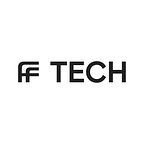From the first line of code to a platform
By Cipriano Sousa, Chief Technology Officer.
This post was originally published on our F-Tech Blog. Come check it out here :-)
I was the one who wrote the first line of code of Farfetch. I still remember when José Neves wrote me an email saying he had an idea and wanted to discuss it with me. We met the next day. I thought it was a rather ambitious idea when I heard it, perhaps even impossible, but I decided to be part of this challenge. I already knew José for many years, and we had worked together before, and he had an evident vision. He knew what he wanted.
In the beginning, we were a startup with ambitions and a few people. I knew the priority was to build a functional, pleasant to use solution, with the capacity to host different boutiques, each one of them with a distinct identity, different owner and employees. We always knew we needed a platform.
At first, the technology team had just one person in it — me! As time went by, I understood that these tools weren’t enough. To follow our business requests, we needed to build a more complex platform, to support all the boutiques, items and visitors to be the worldwide business we were aiming to be, and it would demand profound changes to our architecture and technology.
We needed to grow. Our back-office became more elaborated, and we started hiring more people.
Our team got named around six years ago, after Farfetch and its technical side: F-Tech. We are a big group of Product and Technology teams combined. As we grew, we made sure we hired both Product and Technology experts who had deep knowledge of their fields. The luxury retail industry requires more attention to detail, fast solutions, and new products quickly.
Our Product side is more connected to our clients: design, user experience, meeting our customers’ needs with our business needs. Our Product specialists know no limits to creativity, are analytical, and have a sharp eye for detail. Our Technical part is more related to building the structure of the machine that connects our clients to Farfetch, and vice-versa. It is our database, systems, release, architecture, agile, security, and so much more. Our team members analyse, develop, and investigate cutting-edge solutions, and have the full stack ambition, and the sustainability to create a new operating system that will reinvent fashion for customers, brands and boutiques.
When I look back, I am very proud of what Farfetch has achieved as a whole, and the F-Tech has played a significant part. We create the tools that connect Farfetch to customers and partners.
Today I want to make sure we have the right people, the right structure, and that we are becoming even more agile. My priority is our people.
We started as a small startup, and now we are a decade old, but I want to keep our startup environment. Therefore, we organised F-Tech in domains, and each domain has a particular mission towards Farfetch, Product and Technology wise. Domains contain clusters, and we split each cluster into teams. My goal is that each cluster works like a startup, which means that if a cluster wants to choose a specific programming language or tool, they are free to do it. This is because we want to have autonomous groups to keep being agile and fast because it guarantees we continue developing.
I also believe that having a startup spirit within Farfetch is the best way to maintain our values and culture, especially with new people joining us every month: team spirit, to never be satisfied with what you have already done, and to always keep in mind more and better can be done, be informal, be friendly, be agile, have better products in the market, and keep the mindset that there will always be new things and different things to do.
We started in a small office in Guimarães in Portugal, and now are have offices in several locations in the world, and our people don’t stop to surprise me. We continue to look for ways to innovate, and I am excited with what the future holds for us, and the opportunities it will bring. We keep focused on doing what’s never been done.
